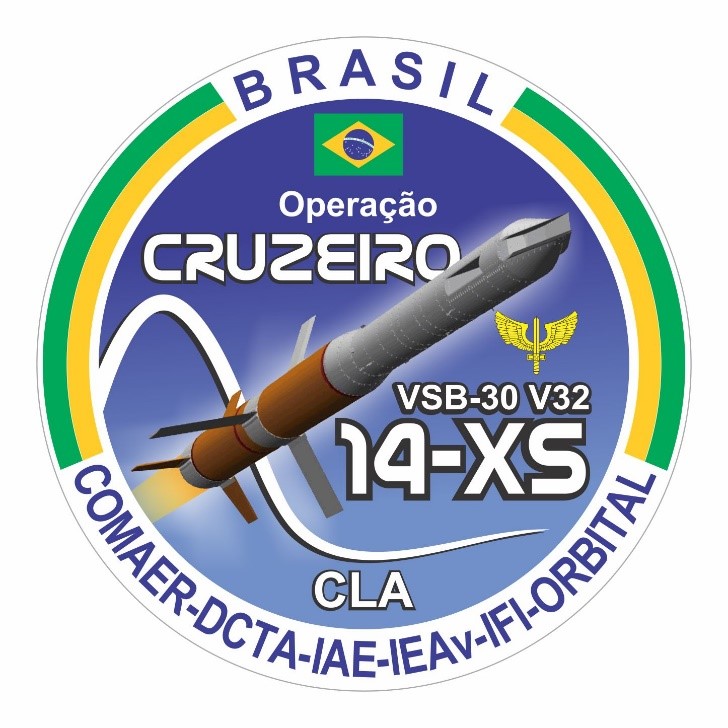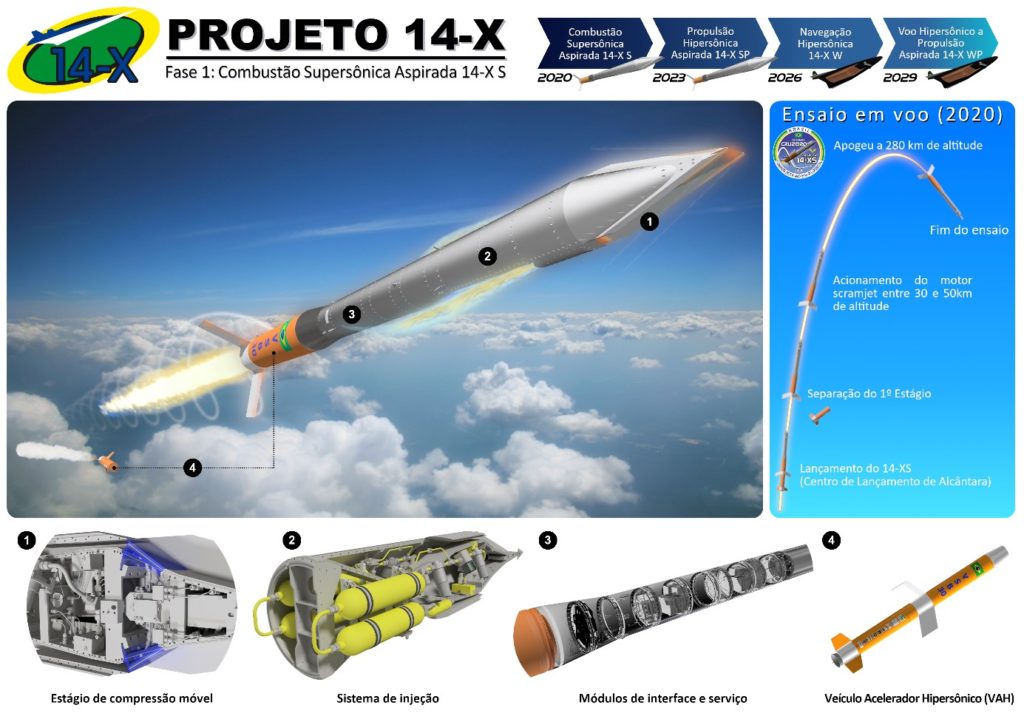OPERATION CRUISE: First Flight Test of a National Hypersonic Aeronautical Engine

The Department of Aerospace Science and Technology (DCTA) has already defined the name of the Campaign responsible for the first Flight Test of the hypersonic aeronautical engine being developed in the country: Operation CRUZEIRO. The official presentation of the Biscuit related to the operation took place at the end of October, and highlights the integrated hypersonic accelerator vehicle (VAH) system and hypersonic aeronautical engine, called 14-X S. “During Operation Cruzeiro, the demonstration platform of the aspirated hypersonic engine will be taken to its starting condition, at around 7,500 km/h in the Earth’s stratosphere, by the VAH, based on the VSB-30 sounding rocket, the 32nd in the series”, explains Dr. Israel Rego, Project Manager Strategic 14-X of the Aeronautics Command (COMAER).
The VSB-30 has already been successfully used twice in campaigns under the Australian HIFiRE Program, for flight testing of a supersonic combustion aeronautical engine (scramjet) and a hypersonic glider. “In our case, the 14-X S will be the payload of the VAH, functioning as an “aspirated” propulsive third stage, whose subsystems are already being manufactured by IEAv in partnership with the company Orbital Engenharia LTDA, and whose inspections and qualification tests and acceptance will be conducted by the Institute of Aeronautics and Space (IAE) for subsequent certifications by the Institute of Industrial Development and Coordination (IFI)”, states Rego.
Operation CRUZEIRO will be conducted from the Alcântara Launch Center (CLA) which, in addition to having a unique infrastructure for launch and tracking, naturally has a privileged location, capable of offering a vast “flight corridor” over the Atlantic Ocean. . Still in support of Operation CRUZEIRO, the Barreira do Inferno Launch Center (CLBI) will be used as a remote station for redundant tracking of the trajectory above the Earth’s mesosphere.
“In this first flight test, one of the main objectives is to telemeasure aerothermodynamic data associated with the engine starting condition, capable of validating and optimizing our computational models and experimental data obtained in the laboratory. Furthermore, it will consolidate the use of some critical technologies, with emphasis on the mobile compression stage, supersonic combustor and fuel storage and injection system (gaseous hydrogen)”, says Dr. Dermeval Carinhana Jr., Head of the Division of Aerothermodynamics and Hypersonics at IEAv. He further explains: “Operation Cruzeiro closes a cycle of just over a decade of efforts to establish the foundations and requirements associated with scramjet propulsion technology, at the same time that it begins a new, unprecedented cycle regarding the development of a national defense product.”
In this new, fascinating and challenging scenario, the Director of IEAv, Col. Lester de Abreu Faria, adds: “Operation Cruzeiro appears to be a first and major step in terms of hypersonic flight tests, contributing to raising the level of technological readiness (TRL) of the Brazilian Air Force (FAB) regarding aspirated hypersonic propulsion systems, jumping from level 4 (validation in a laboratory environment) to level 7 (demonstration in an operational environment). It is just the first step of a disruptive and impactful journey on the World Geopolitical scenario that will place Brazil in a prominent position compared to the largest and most developed countries in the world. That’s what we work for and that’s why we are recognized!”

Source: Institute of Advanced Studies (IEAv) website

